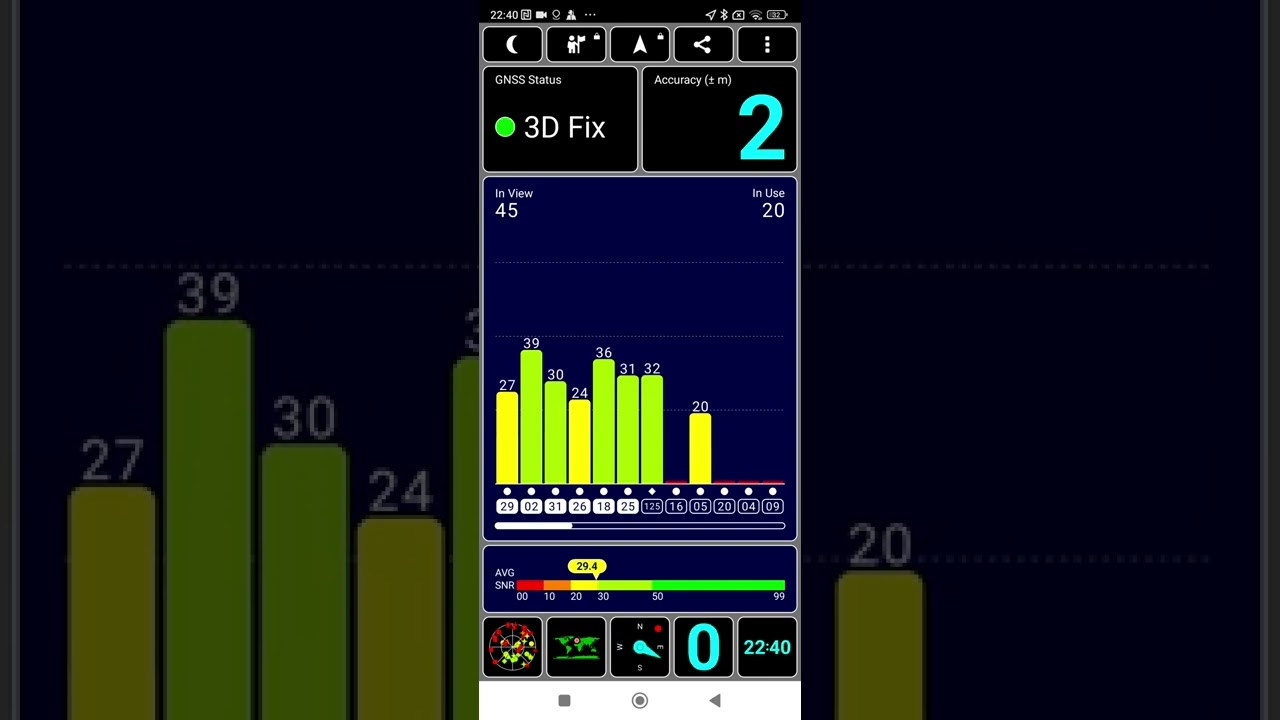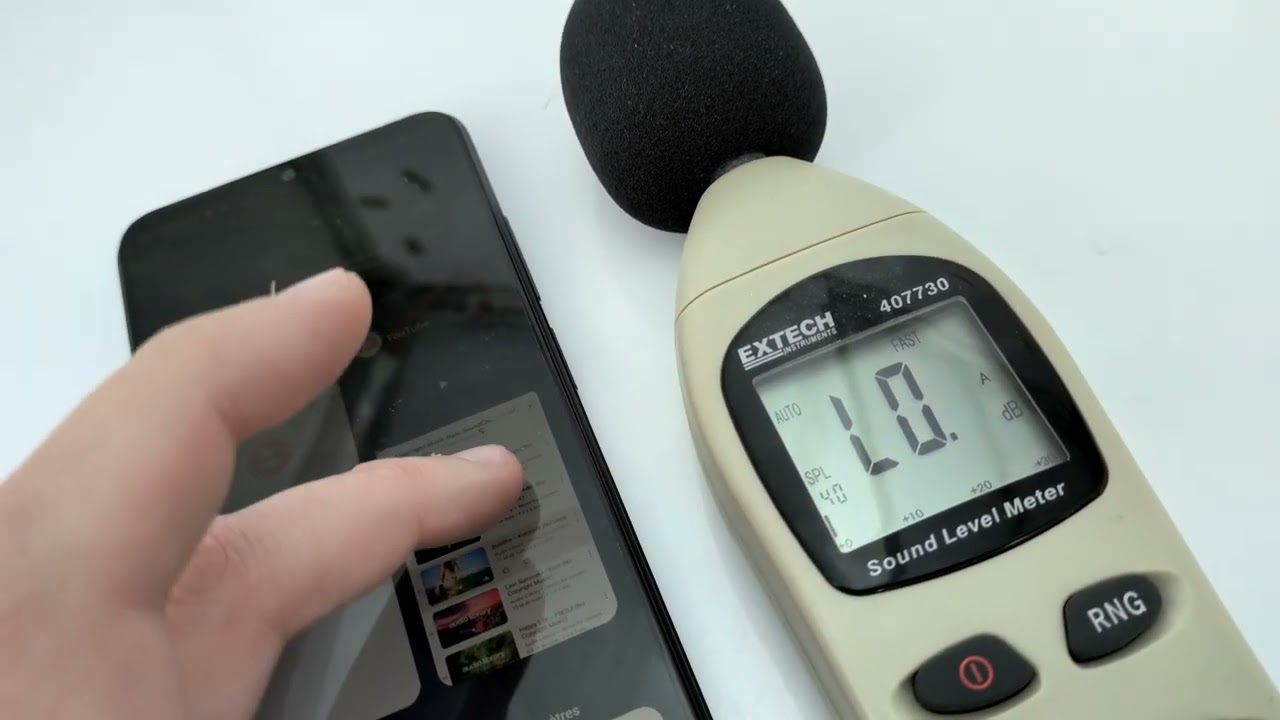Smartphones
POCO M5 : test, review and price
Published on: 14-11-2022 / Modified: 15-04-2023
I'm a regular at the POCO brand, I've bought at least a dozen phones from this brand over the past 12 months, but with a decrease in activity around smartphones, I had moved away to other horizons to test other products and I had not noticed the release of this new POCO M5. This new phone was released quite discreetly in September but it is with the approach of Black Friday that it will undoubtedly know its first flight because it revives the POCO tradition by offering a price / performance ratio superior to the competition with some small novelties.
Manufacturer web site:
https://www.po.co/global/
Site where I have bought the POCO M5:
https://amzn.to/3ExM...
Structure of my tests
I test the phones according to a pre-established structure (see below) to provide you with as much information as possible. Unfortunately, this takes a long time. Some tests like network performance tests take several days and for photo tests I sometimes have to wait until the weather is suitable to take pictures in good conditions. I am therefore obliged to publish the tests step by step, so I invite you to come back if the test is not complete at the time of your visit.Price POCO M5
The list below shows the prices for the POCO M5 from more than 50 sites around the world. If you are not satisfied with any price, you can subscribe to a price alert to be the first to be notified when the price drops.The above links are affiliate links from companies such as Amazon, Gearbest, Aliexpress,... If you appreciate my work, I would be grateful if you could purchase these products through these links. It costs you absolutely nothing but I get a small commission that allows me to buy the material I test. Thank you very much!
Timeline
November 14, 2022: purchase of the Poco M5 on AmazonNovember 15, 2022: receipt of the package, the test can begin
Why this phone?
The POCO brand first and foremost addressed gamers with a very specific design, but by dint of producing high-performance phones at a good price, POCO has attracted a wider audience. It shows in the design, they've moved a bit away from raw design for gamers and performance isn't the only selling point anymore. The M range is POCO's entry-level range, they are consumer-oriented phones and with a launch price below €200, I think it will find its place on the market. Its price is undoubtedly the first strong argument of the phone because finding a decent phone for less than 200€ is becoming quite rare.The POCO M5 uses a Helio G99 CPU which is not available on any other POCO or Xiaomi, this is a sign that it is really a new phone and not a simple recycling of an existing model. I also see that POCO dropped Omnivision in favor of Samsung for the main sensor, this is another positive signal for this phone. There is no 5G and the screen is an IPS screen, these are weaknesses compared to other models from POCO but we must not forget that this phone is available for less than 200€. For the battery, the brand remains on a capacity of 5000 mAh, so I think the arguments in favor of this phone will be its price, its camera, its performance and its autonomy.
Unpacking
First configuration
The POCO M5 is released under MIUI 13 and after the first configuration, I had the option of downloading MIUI 13.0.8 which brings an Android security update. The setup screens are largely the same as I've seen on other POCO phones.Finish
Specifications
The information below comes from the Device Info HW application. The application provides detailed technical information about the tested phone. I tested the 4GB / 128 Gb version of the POCO M5 in black color. You will find all the detailed technical characteristics of this phone in the following screenshots. As usual, I spotted traces of recycling and by recycling I mean that Xiaomi/POCO often re-uses components from other phones to make new models.
I see for example that the screen is an NVT-ts type screen that is also found on other models, the fingerprint reader is also taken from other models and the same goes for wifi chip, sound chipset, main camera and more. That's not to say this phone is bad, it's just a new combination of existing stuff with some new stuff like the CPU.
CPU / GPU Performance
The CPU is the biggest novelty of this phone, it is a Helio G99 from Mediatek. At the time of writing these lines it is the first POCO to use this processor but I am sure that we will soon find it in other models. It is an entry-level processor that approaches the mid-range. It offers very good performance for the price, it is not aimed at gamers but will offer sufficient performance for a large majority of users.
On the GPU side, we find a Mali G57, it's an old acquaintance that I've already had the opportunity to test in the Redmi Note 9T, the Poco M3 Pro, the Poco M4 Pro and many more. Here too, we are on entry-level performance but sufficient for daily use excluding hard core gaming.
Benchmark Antutu/3DMark
With a score of 268158 points, the POCO M5 cannot be considered a high-performance smartphone unless we compare this performance with its price. With such a level of performance, you get a perfectly smooth phone for everyday tasks and which will allow you to play most simple games in good conditions. If you are more of a fan of Fortnite or this kind of game, you will have to make some concessions on the level of graphics but again, in this price range, you will not find much better. This POCO M5 does a little better than the M4 Pro but it is above all in terms of its memory performance that it stands out and a good memory performance must have a positive impact on the responsiveness of the phone.Energy efficiency
To better gauge the performance, I pushed the phone to its maximum for several minutes and I measured the computing power as well as the consumption in watts. This test allows you to better understand the raw performance of the phone and its impact on battery life.Results of my measurements:
Average CPU consumption at 100%: 4.07W
Average GPU consumption at 100%: 1.71W
Average consumption of the FPU at 100%: 2.37W
Average consumption of the screen: 0.68W (in 60hz)
What should we understand from these results?
The raw performance (in calculation) of the phone is comparable to what we find in the mid-range, so this POCO does better than other phones in the same price range but it comes at a price consumption because this phone has below average energy efficiency and this will undoubtedly affect the battery life if you are the type to use your phone to the maximum. The battery reached an average temperature of 33°C during this test, so we only feel a little heat coming from the back of the phone, but nothing very disabling.
Gaming
To test the performance in game, I download the mobile PUBG game and evaluate the in-game experience, graphics level and depth of vision. This game is quite demanding and should help you evaluating the performance of a phone.

Network performance
The POCO M5 is not 5G compatible but I wouldn't be surprised if POCO releases a 5G version of this phone later. For 3G/4G, the phone is compatible with most European frequencies (even the B28).Signal 4G (from December 2020)
I decided to change the methodology for measuring the network because I noticed that the configuration of the mobile network changes over time. This makes it more difficult to compare phones because the conditions are no longer exactly the same.
To overcome this problem, I set up a device that captures 24 hours a day about ten parameters from the mobile network (ex: cell id, rssi, rsrq, snr, frequency,...). I then place the phone next to the device for 24 to 48 hours taking the same measurements so that I can compare them.
Overview of the phones tested with this methodology
I made 762 measurements in 4G to evaluate the network sensitivity of this phone and I got a good result. I got an average signal of -95.07dBm with the phone and -95.18dBm with the probe, so the phone did slightly better than the probe. We can also see on the graph that the differences between the two are very small and that the signal remained stable over the entire duration of the test.
Download/Upload speed
To test the download speed, I have identified some 4G cells offering good performance where I test all my devices several times to see what download and upload speed they can achieve.
Wifi performance
To test a phone's ability to receive the network properly, I take measurements near my router and then remotely (and always at the same place). This gives me an average in dBm where a value of -90 dBm indicates poorer performance than a value at -30 dBm.Wifi signal
I obtained an average signal of -18 dBm near the router and -64dBm at a distance, these are average values which indicate good wifi sensitivity. I then carried out around 300 measurements which show that the wifi signal remained stable throughout the duration of the test.
Download/Upload speed
To test the speed in Wifi, I connect to my router in 2.4Ghz and 5Ghz (if available) and use the Ookla application to measure the speed.
GPS performance
To test the accuracy of the GPS signal, I use two positioning applications to evaluate the difference between the actual position and the position indicated by the phone. This test is done outdoors with nothing to obstruct the signal. An accuracy level of up to 3 meters can easily be corrected by an application (e.g. Google Maps).

Battery range
To test battery life I developed an application that measures the battery level minute by minute until the battery is empty. This application consumes about ten percent of the phone's resources and I do a test with 100 brightness. This test aims to reproduce a contemplative use of a phone (e.g. surfing the internet, reading articles, spending time on social networks). These results are not valid for intensive gaming/streaming use. Not yet available / testedPhoto camera test
To test the quality of photos produced by a phone, I do a technical test (resolution, sharpness, chromatic aberration,...) in studio (identical conditions) to evaluate the technical part objectively. From the second half of 2020, I built my own laboratory to take completely objective technical measurements. I then take pictures in real conditions to see how the camera performs. I then evaluate these photos according to my criteria but I publish the photos so that you can evaluate the result according to your criteria.Hardware
The POCO M5 has a fairly simple configuration for the photo, there is only one sensor on the back despite the presence of two photo modules. The second module is a depth sensor. The main (and only) sensor is a 50 million pixel Samsung S5KJN1 which is also found in many other phones such as the Samsung Galaxy A23, the Realme 10, the Redmi 10, the Nokia G60 or the OnePlus Nord N20SE . This sensor is an entry-level sensor, it is not bad, it is even better than the equivalent at Omnivision which was often used on the entry-level POCO. I still have to check if POCO has made some improvements in photo processing, but a priori I expect the same type of performance as the other models.Update: second sensor is indeed an ultra wide angle sensor and even if it is not accessible from the photo application, it is possible to use this sensor by passing by GCAM.
Photo quality
Photo quality (indoor/studio)
The studio test is carried out under the same conditions so that the results can be compared on an equal basis. I calibrate my lighting for each test to obtain the same brightness and colour temperature. This test is a preliminary analysis of the technical qualities of a camera. Most phones fail this test, so you should also read the results of the other tests in the following paragraphs.
What is strange with this phone is that it is equipped with a second sensor but this one is not accessible from the photo mode of the photo application by default. I was able to access this second sensor using Gcam which works great on this phone. I would use Gcam in addition to the default photo app for my outdoor photos (weather permitting).
Photo: technical test
I was inspired by industrial technical tests to create my own technical test to evaluate the technical quality of a camera. This test is an objective assessment of a camera's ability to render a scene correctly.
I test the following elements:
- centre sharpness, peripheral sharpness
- colour fidelity based on 24 reference colours
- level of chromatic aberration
- dynamic range (ability to capture dark and light areas without loss)
- distortion
The technical evaluation may differ from the subjective evaluation as the feeling of a photo will be influenced by the processing provided by each manufacturer.
What is strange with this phone is that it is equipped with a second sensor but this one is not accessible from the photo mode of the photo application by default. I was able to access this second sensor using Gcam which works great on this phone. I would use Gcam in addition to the default photo app for my outdoor photos (weather permitting).
Outdoor photo quality
Not yet available / tested
Test photo / night
Not yet available / tested
Video quality
Stabilisation
Not yet available / tested
Video normale conditions
Not yet available / tested
Video low light
Not yet available / tested
External audio quality
This test is intended to give you an overview of the volume and sound quality during calls and when listening to music through the external speakers.

Sound quality for calls
The listening speaker delivers good quality sound for calls, the volume is a little above average which will allow you to hear your interlocutor in most situations. If, on the other hand, I play the sound on the main speaker, the sound quality is much worse, especially in the treble. The volume delivered by the main speaker is also average.
Sound quality for music
The POCO M5 is only equipped with a speaker at the bottom of the phone, it is a curious choice because most entry-level Xiaomi phones deliver stereo sound. The sound delivered by this speaker is not as powerful as what I am used to testing in this price range and although the sound quality is not bad, there are still some audible losses. in the treble.
Audio quality (headphones)
To test the quality of the phone's audio output, I connect the device's audio output to a measuring tool, then play sounds on all frequencies and measure the differences between the original sound and the sound produced by the phone. In this way I measure the phone's ability to correctly reproduce all sounds.The power is there, the sound provided by the headphone output is a little above average without being too brutal, it suffers almost no distortion at full volume. Overall, the sound produced by this POCO M5 is quite comparable to what is done in the mid-range.
Screen quality
To test the screen, I use a colorimetric probe that measures the color accuracy of a screen, as well as other parameters to see if a screen is able to correctly reproduce an image. I also test the brightness level to determine if the screen will be able to display an image in full sunlight.Colorimetry
Brightness / Contrast
I measured a maximum brightness of 400cd/m² and although this is sufficient in most conditions you may not be able to read your screen well in the sun, ideally it would have taken more than 500cd/m² to be able to read screen in good outdoor conditions.
I measured a contrast of 1509:1, it's a good result for a screen of this type but an amoled screen would have made it possible to obtain an almost infinite contrast with blacks which are really black.
Biometry
Not yet available / testedOperating system
The POCO M5 uses the same operating system as most POCOs but I noticed some differences with the other models I tested. First there is the appearance of a waiting animation each time the application returns, which induces a delay between closing the application and returning to the main screen. I also noticed that the file installer was not POCO's by default, on each installation I have the choice between the default installer and that of APK Mirror, I don't see what APK Mirror is coming from do in there. These are not problems in themselves but they are differences compared to other phones.
Encoutered bugs
Not yet available / testedAccessories POCO M5
Compare POCO M5 with the others
Test / Review conclusion
Not yet available / tested
Strengths
Not yet available / tested
Weaknesses
Not yet available / tested
Alternatives to this product
Not yet available / tested
 LAURENT WILLEN
LAURENT WILLENHead of myself on this blog
I share my passions on my blog in my free time since 2006, I prefer that to watching nonsense on TV or on social networks. I work alone, I am undoubtedly one of the last survivors of the world of blogs and personal sites.
My speciality? Digital in all its forms. I have spent the last 25 years working for multinationals where I managed digital teams and generated revenues of over €500 million per year. I have expertise in telecoms, media, aviation, travel and tourism.











































Questions/Comments